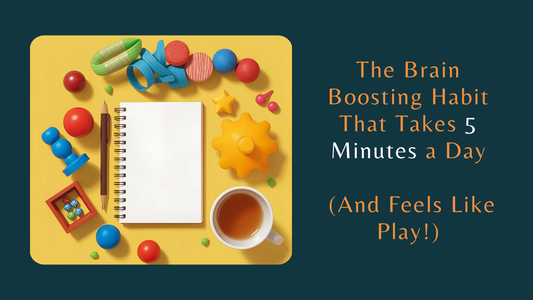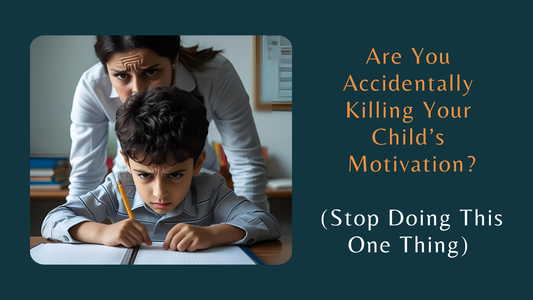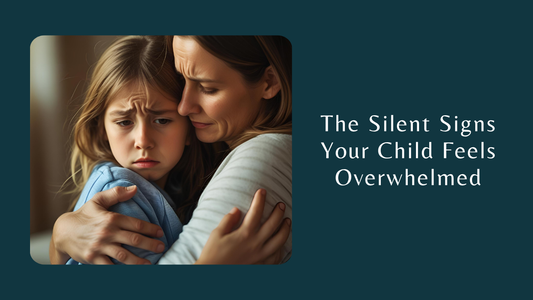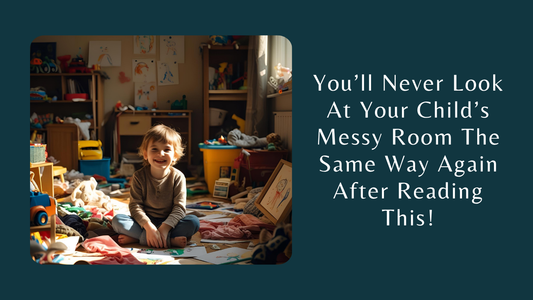Let’s be honest: tantrums aren’t fun. Not for you, not for your child, and definitely not when they’re happening in the cereal aisle while strangers stare at you like you're raising a tiny gremlin.
But here’s the thing: tantrums aren’t just random explosions of rage. They’re communication. Messy, loud, irrational communication - but communication all the same.
Your child is trying to tell you something. They just haven’t quite mastered how to say it yet.
Let’s decode what’s really going on behind the screaming, stomping, and spaghetti-flinging.
Tantrum Type 1: “I’m Not Being Naughty - I’m Overwhelmed!

What it looks like: Screaming over the wrong colour plate. Meltdown because the socks “feel weird”. Instant tears when something doesn’t go their way.
What it means: Your child’s brain is still learning how to manage big feelings. A small thing (to us) can feel enormous to them. If they’re tired, hungry, overstimulated - or all three -they’re more likely to lose it over the tiniest trigger.
What to do: Try not to reason in the middle of the storm. Instead, help them calm down first (quiet space, cuddles, a sensory toy). Save the life lesson for later. In that moment, it’s less about fixing and more about soothing.
Tantrum Type 2: “I Feel Powerless – and I Hate It!"

What it looks like: Refusing to get dressed. Throwing toys when it’s time to leave. Total meltdown when told “no”.
What it means: Kids are small people in a big world where adults make most of the decisions. Tantrums often happen when they feel they’ve got zero control.
What to do: Offer choices where possible. Not “Do you want to brush your teeth?” (that’s a trap), but “Do you want to use the dinosaur toothbrush or the sparkly one?” Giving mini doses of control can calm their need to assert independence.
Tantrum Type 3: “I Want Something, and I Don’t Know How to Cope With ‘No’”

What it looks like: Falling to the floor over biscuits. Whining turns into wailing. Negotiation attempts: “Just one! PLEEEEASE!”
What it means: Desire + lack of impulse control = tantrum. Your child isn’t a master manipulator - they’re just not emotionally mature enough to handle disappointment yet.
What to do: Hold your boundary calmly. “I know you really want a biscuit, and it’s hard when we can’t have what we want. But we’re having lunch first.” Stay consistent - even if you're sweating and half the shop is watching.
Tantrum Type 4: “I Need Connection, Not Correction”
What it looks like: Acting out, getting clingy, or suddenly becoming ‘difficult’ after a long day apart.
What it means: Kids don’t always say, “I missed you today.” Sometimes they throw a book across the room instead.
What to do: Try a “connection first” approach. Spend 10 minutes of undivided attention doing something they choose. Play, cuddle, read. That emotional tank needs topping up before anything else will work.
Tantrum Type 5: “My Brain Is Still Under Construction”

What it looks like: All the above, often without warning.
What it means: The part of the brain responsible for logic, patience, and emotional regulation (the prefrontal cortex) is still developing in young kids. And when big feelings hit, they quite literally can’t think straight.
What to do: Stop expecting adult behaviour from a developing brain. Breathe. Ground yourself. Teach them the skills over time - but remember, they’re not born knowing how to cope.
Real Talk for Parents
Here’s a surprising truth: tantrums aren’t a sign you’re doing something wrong.
They’re a sign your child is growing.
They’re trying to figure out the world, their emotions, and where they fit in it all. And while you might feel like you're failing when your child screams about toast being “too toasty” - you’re not. You’re guiding a human through the wildest part of development.
That’s no small thing.
Final Tip: What If You Could Translate Tantrums Into Teachable Moments?
You can. But only after the storm passes.
Next time, when things are calm, you can say something like:
- “Remember when you were really upset earlier? What do you think we could try next time to help you feel better?”
- “It’s okay to feel angry. It’s not okay to throw toys. Let’s come up with a plan for next time.”
You're not just raising a child. You're helping build a resilient, emotionally intelligent person.
And tantrums? Just part of the blueprint.




